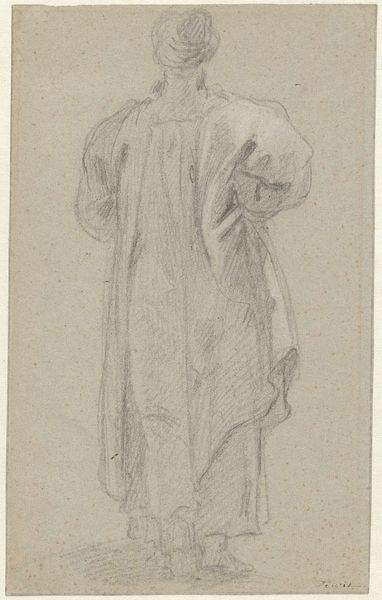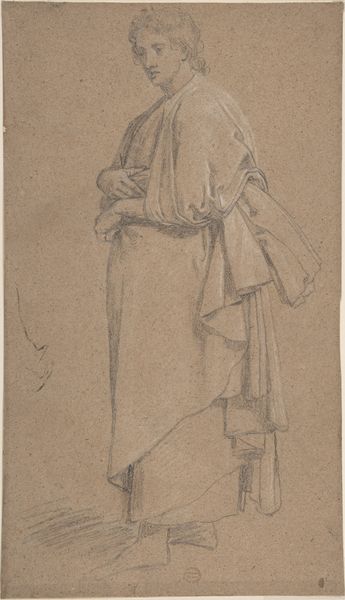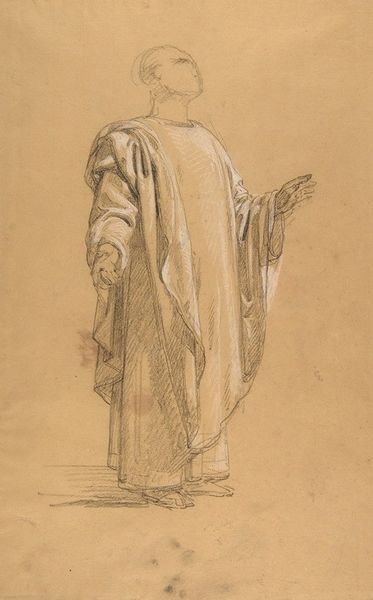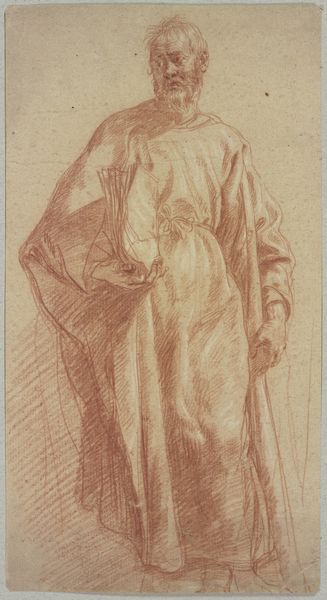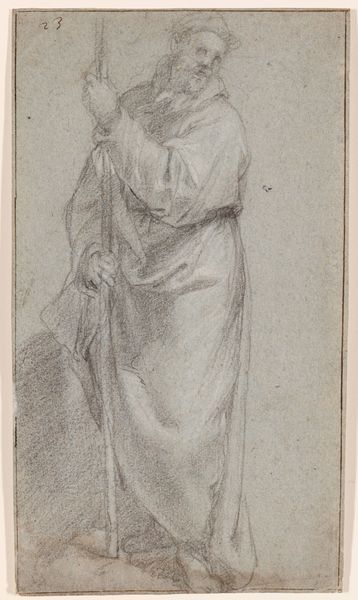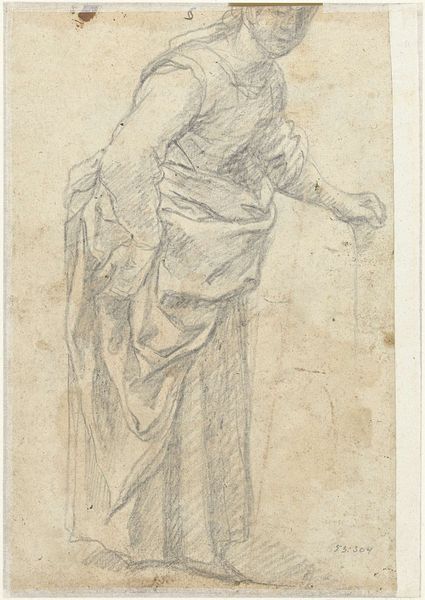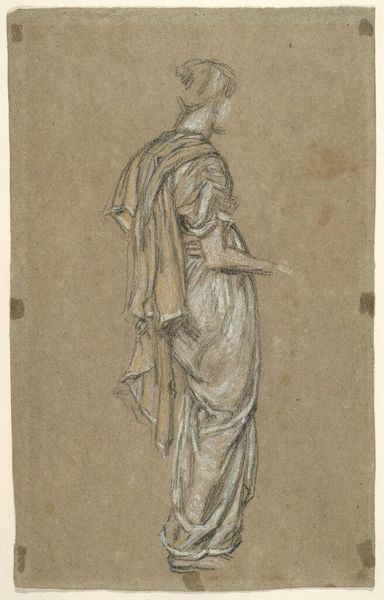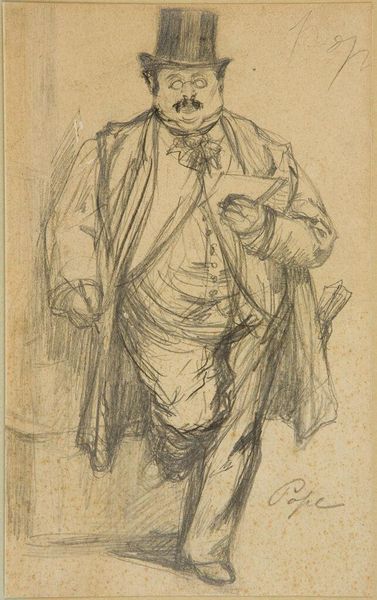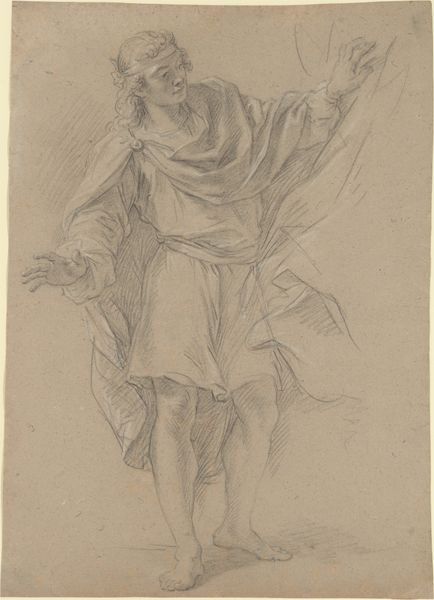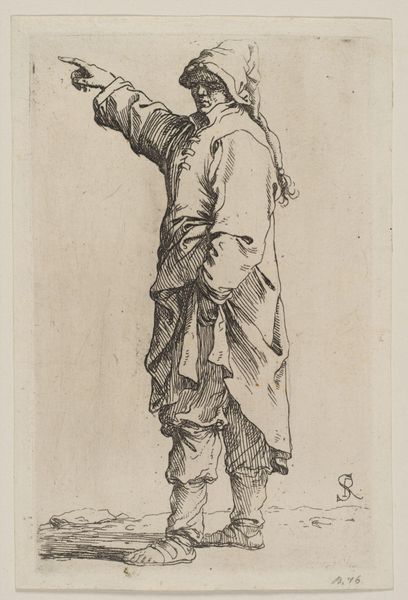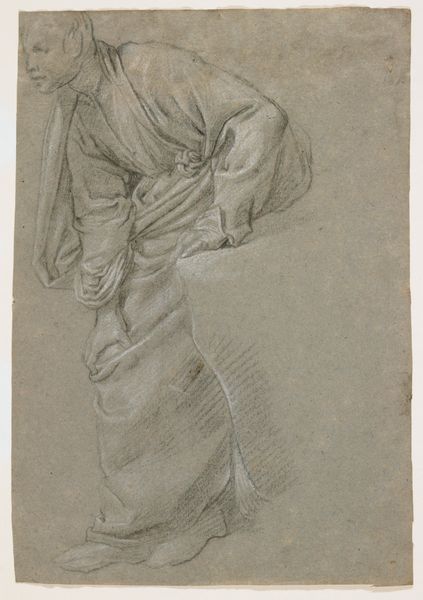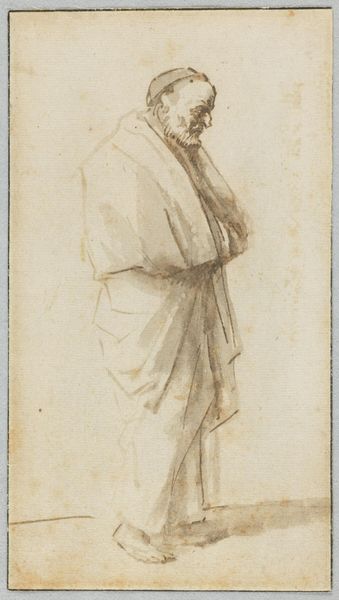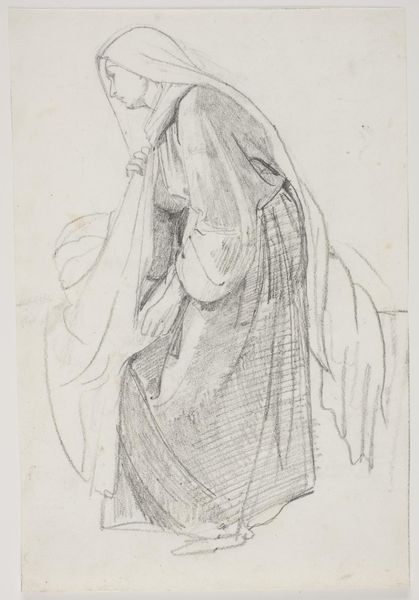
drawing, pencil
#
portrait
#
pencil drawn
#
drawing
#
baroque
#
pencil sketch
#
charcoal drawing
#
figuration
#
form
#
pencil drawing
#
pencil
#
portrait drawing
#
pencil work
Dimensions: height 338 mm, width 243 mm
Copyright: Rijks Museum: Open Domain
Jacob de Wit created this chalk drawing, 'Standing Man with Turban and Stick, Seen from the Back,' sometime in the first half of the 18th century. During this period, there was a prevalent fascination in Europe with the ‘Orient,’ a term used to describe the Middle East and Asia. However, this interest was often steeped in fantasy and misrepresentation, rather than genuine cultural exchange. De Wit's drawing participates in this trend, depicting a figure in what appears to be imagined Turkish attire, including a turban. The man’s posture and the staff he holds evoke a sense of authority, yet his averted gaze keeps him remote. Consider the power dynamics at play here: the artist, a European man, is creating an image of a man from a distant land. This act in itself reflects the colonial gaze inherent in much of Western art of this era. What does it mean to depict someone when you are not part of their culture or experience? How does this affect our understanding? The drawing leaves us with a quiet, contemplative moment, a sense of distance and perhaps a challenge to reflect on the act of representation itself.
Comments
No comments
Be the first to comment and join the conversation on the ultimate creative platform.
